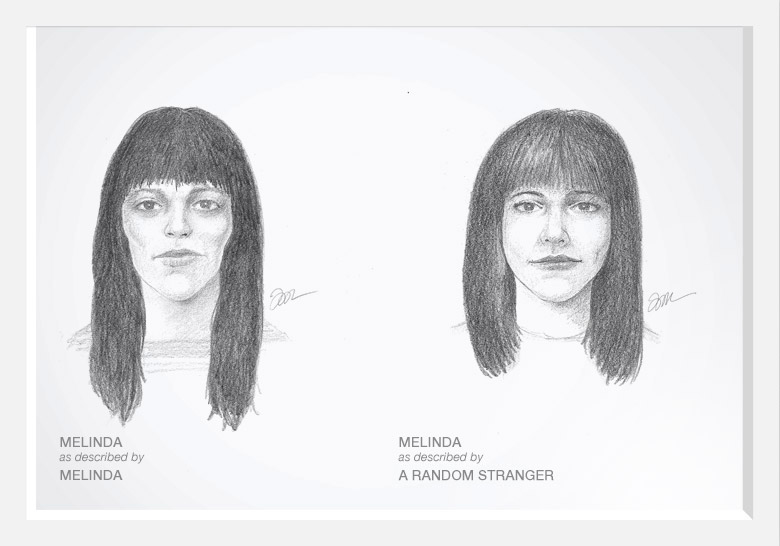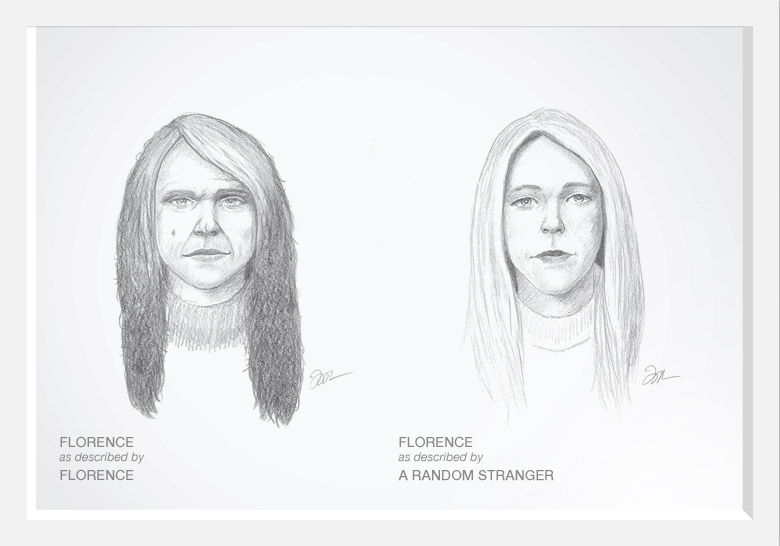Written by Lillian Reuman
Click here for PDF
 Just over one month ago, Dove released a three-minute video ad, “Real Beauty Sketches.” To date, it has accrued over 114 million views, making it the most watched video ad of all time.
Just over one month ago, Dove released a three-minute video ad, “Real Beauty Sketches.” To date, it has accrued over 114 million views, making it the most watched video ad of all time. The viral video features Gil Zamora, an FBI trained forensic artist, as he converses with and sketches women as they describe their own appearance. Seated behind a curtain, Zamora prompts participants to describe their facial structure, prominent features, and other related details in neutral terms. Shortly after, strangers who had briefly met the women earlier describe the same women to Zamora.
The women tend to describe themselves in more negative terms – for example, emphasizing a “protruding jaw” – whereas strangers opt for more positive terms, such as eyes that “lit up when she spoke.” As the video concludes, the women have an opportunity to view the two sketched portraits side-by-side. Many are surprised to see the contrasting sketches; one participant acknowledges that the sketch based on her self description appears “sadder” when compared to the “more open, friendly” version of her as described by a stranger.
 Evoking various reactions from viewers, the social experiment explores womens’ distorted self-perceptions. In sending the sentimental message “you are more beautiful than you think,” Dove found itself amid controversy. For one, critics cited the ad’s lack of minority representation. Others found fault with the numerous comments that maintain the preference for a conventional standard of beauty via “very nice blue eyes” and the notion that one must be thin to be beautiful – for example strangers’ describing a “nice thin chin” or a woman’s face that was “thin so you could see her cheekbones.”
Evoking various reactions from viewers, the social experiment explores womens’ distorted self-perceptions. In sending the sentimental message “you are more beautiful than you think,” Dove found itself amid controversy. For one, critics cited the ad’s lack of minority representation. Others found fault with the numerous comments that maintain the preference for a conventional standard of beauty via “very nice blue eyes” and the notion that one must be thin to be beautiful – for example strangers’ describing a “nice thin chin” or a woman’s face that was “thin so you could see her cheekbones.” Despite these valid critiques, the video may enhance insight for all viewers, particularly individuals who struggle with body image insecurities. By including women who appear to embody society’s beauty ideals yet dislike their appearance, viewers realize that individuals who are thin, youthful, and blue-eyed can still experience appearance-related disappointment and distress.
For individuals who continuously improve their appearance – via exercise, plastic surgery, or other means – in search of an elusive beauty ideal, does happiness (or body image satisfaction) follow? Research suggests “no.” In fact, individuals with body dysmorphic disorder (BDD), characterized by a severe preoccupation with a perceived defect in one's appearance, are seldom pleased with the results of attempts to modify their “flawed” appearance. In a retrospective study of individuals with BDD, researchers Crerand, Menard, & Phillips (2010) found that while 43.4% of surgical/minimally invasive procedures led to temporary improvement in appearance and/or preoccupation, only 2.3% of surgical/minimally invasive procedures led to longer-term improvement in overall BDD symptoms.

Speaking to the many who maintain an inflated or distorted perception of their own attractiveness, those who are satisfied with the way they look, and others who don’t care either way, Dove’s creative campaign has certainly stimulated an interesting dialogue worldwide.
All images used are from Dove Real Beauty Sketches http://realbeautysketches.dove.us/
©2013 Massachusetts General Hospital OCD and Related Disorders Program | Reprint only with permission


